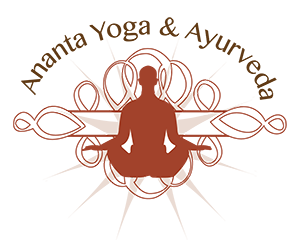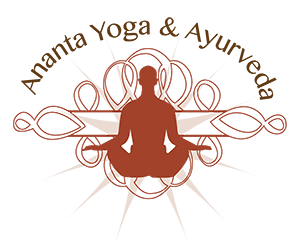Q. How Does Yoga Work?
A. The exercises or postures of Yoga – “ Yoga Asana” are designed to put pressure on the glandular systems of the body, thereby increasing its efficiency and total health while strengthening and toning the limbs and detoxifying the body simultaneously.
Read full answer here >>
Q. What do I wear and should I bring anything to my Yoga/Pilates/Somatic Movement class?
A. Wear loose, comfortable, stretchy clothing. Make sure long bottoms do not cover the feet in case of tripping.
Yoga is practiced barefoot but you will need socks and a top for the warm up and relaxation parts of the class. We have suitable yoga mats for you to use – they must be sticky rubber mats to prevent slipping.
Ideally if committing to classes regularly it is better to have your own mat for hygiene reasons. We sell good quality yoga mats at the studio for €15 each.
Bring a bottle of water, hydrate well both before and after class but drinking during class is discouraged. All other props and blankets are supplied by us – feel free to bring your own!
Q. Do you have any general useful guidelines to follow when starting yoga classes?
A: If attending class for the first time, please contact the relevant instructor to book your place and arrange a class level suited to your needs to avoid disappointment.
- Always inform your instructor of any medical conditions, injuries or recent serious illness – It is very important to tell us if you are pregnant.
- Arrive to class 5 minutes early to get parked, set up and comfortable. It is unfair to fellow students to arrive late and disrupt the important centering and settling in part of the class.
- Turn off your mobile phone or have it on silent before entering the studio.
- We ask that every student removes their shoes before entering the studio space and places them in the baskets provided.
- Please respect the tranquil nature of the studio environment and keep noise levels to a minimum – there may be other classes in progress.
- Hydrate well before and after class but refrain from drinking if possible during the class.
- Eat a light but nutritious meal no later than two hours before class.
- Wear loose, comfortable, stretchy clothing and ensure that bottoms do not cover the feet.
- If you are feeling unwell – stay at home and rest.
Relax and enjoy!
Q. I am not sure which style of yoga I should try?
A. All of the different yoga styles taught at The Ananta Yoga Studio are based on Patanjali’s eight limbed system and are considered to be Classical Styles of Yoga. (Please see our “What is Yoga ” post for further details of Patanjali’s system).
They all are based on the use of Yoga Asana (postures), Pranayama (breathing techniques) and Meditation to bring the mind, body and spirit into unity.These include Vinyasa Flow, Iyengar, Ashtanga and Hatha Yoga.
The difference between them is the teaching approach used in each style and the lineage of teachers under which your instructors have been trained and influenced.
The main emphasis will be on different aspects of the practice according to the style of yoga in question.
Every instructor brings their own unique personality and teaching style to their classes. Well trained instructors will be proficient in making their chosen style of yoga accessible to every student regardless of age, experience or fitness levels.
Our advice is to try out as many different styles and instructors as you can and stick with which ever one you feel is best for you.
Q. What is the difference between Yoga and Pilates and which is best for me?
A. Simply put, the difference between yoga and Pilates is that between East and West.
Both systems build strength and flexibility – the difference between them is not so much physical as philosophical. Yoga is based on the Eastern idea of moving energy through your body. The more freely the energy flows, the healthier and more energetic you feel.
Physical tension hinders the flow and over time areas in you body can become tight, rigid and even painful. The physical goal of yoga is to keep the body supple through movement and stretching. But there is another dimension.
Yoga is a holistic spiritual discipline with its roots in Eastern forms of meditation.The physical postures, although they condition the body, are really aimed at the mind. They symbolize the goal of living your life in a state of balance and composure.
Pilates on the other hand is physical conditioning first and foremost. Its creator, Joseph Pilates, was looking for a way to rehabilitate injured soldiers after World War 1.
He developed an assortment of machines such as the “Reformer” and the “Cadillac”. Using cables and trolleys and unusual body positioning, Pilates excercises stretch and strengthen and are unique in their ability to encourage co-ordination between the muscles that stabalise the body.
Pilates mat work relies more on callisthenic-style excercises and stretches. This form is physically more similar to a yoga class though the emphasis is still on physical change rather than on spiritual development through postures and breathing.
Unless you have specifically been recommended to do either Yoga or Pilates by your GP to address a medical condition – the choice is yours – In fact it does not have to be an either or choice.
Try both, experience both and see what works for you! East or West, the important thing is to explore!
Q: What is Yoga?
A:“Yoga is the ability to direct the mind exclusively toward an object and sustain that direction without any distractions”
Q: Why Yoga?
A: In its entirety, yoga is a very ancient, well thought out, tried and tested system of living which brings the mind and body into unity. The essential purpose of yoga is the integration of all the layers of life – environmental, physical, emotional, psychological and spiritual
Read our full post on Why Yoga here >>
Q. Will Yoga interfere with my Religious Beliefs?
A. Yoga is not a Religion. It has no creed or fixed set of beliefs, nor is there a prescribed, god-like figure to be worshipped in a particular manner. Religions generally are based upon the belief in and worship of things (God or god-like figures) that exist outside one’s self. The core of Yoga’s philosophy is that everything is supplied from within the individual, therefore there is no dependence on an external figure, either in the sense of a person or god figure, or a religious organisation. The common belief that Yoga derives from Hinduism is a misconception. Yoga actually predates Hinduism by many centuries. However, the techniques of Yoga have been adopted by Hinduism as well as by other world religions.
Yoga is a system of techniques that can be used for a number of goals, from simply managing stress more efficiently, learning to relax, improving general health and increasing strength and flexibility all the way to becoming more self-aware and acquiring the deepest knowledge of ones’ own self. Therefore those with deep religious convictions need not fear or be suspicious of the system of Yoga but can embrace it. The practice of Yoga will not interfere with any religion but rather should enhance the overall experience of life and the ability to be happy and balanced without causing conflict or turmoil in relation to personal religious beliefs.


